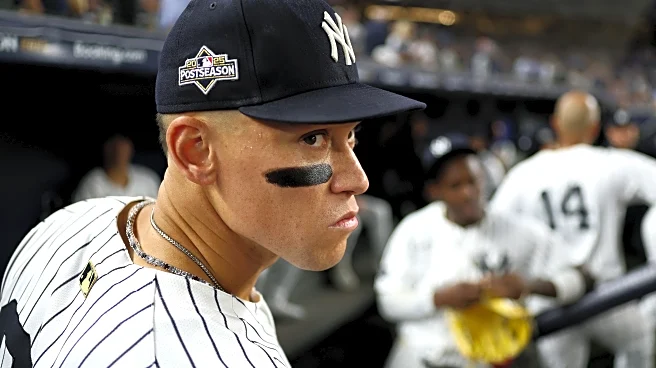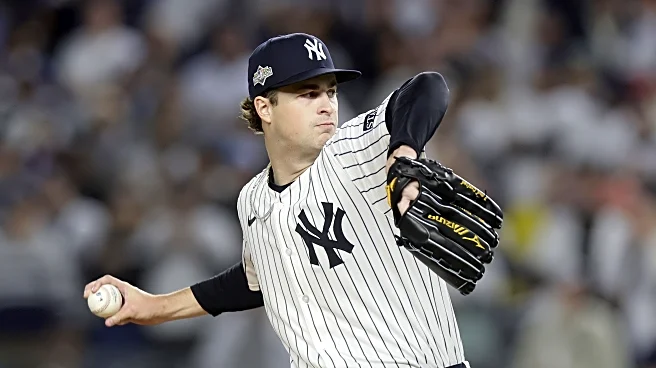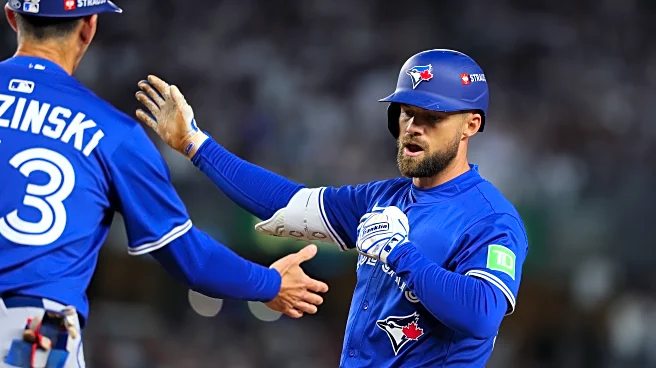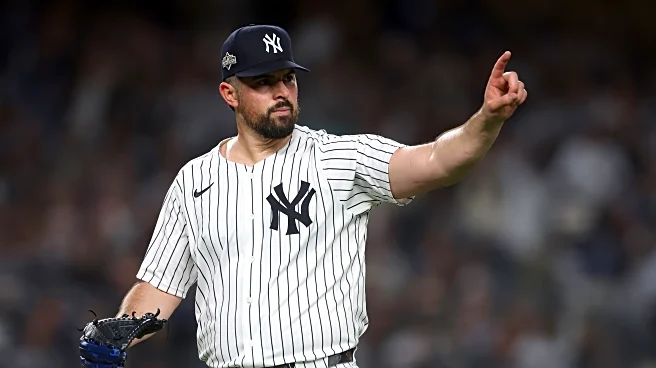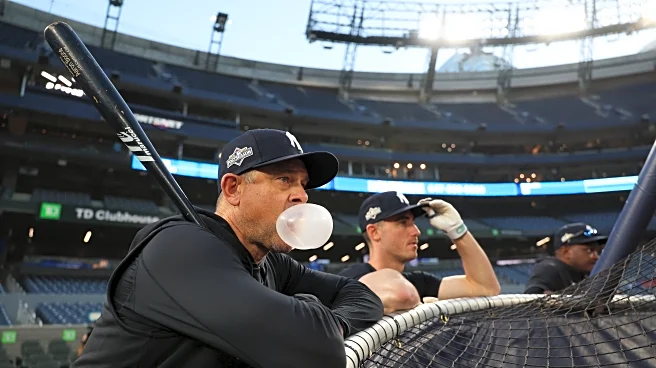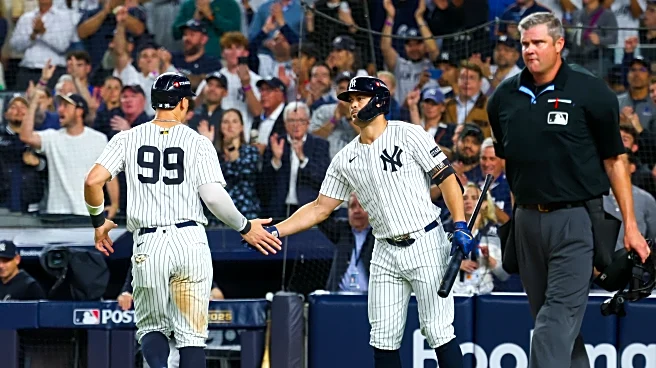What's Happening?
The Toronto Blue Jays, under the leadership of Mark Shapiro, have successfully advanced in the American League Division Series (ALDS) with a roster that includes six former Cleveland Guardians players. These players are Shane Bieber, Ernie Clement, Andres Gimenez, Nathan Lukes, Anthony Santander, and Myles Straw. Bieber, who was acquired before the trade deadline, has recovered from Tommy John surgery and is now part of the Blue Jays' playoff rotation. Clement has emerged as a dynamic fielder and contact hitter, while Gimenez continues to excel as a second baseman. Straw is known for his speed and centerfield defense, and Santander has found success after moving through various organizations. Lukes, a seventh-round pick by Cleveland in 2015, has had a breakout season with Toronto.
Why It's Important?
The inclusion of former Cleveland Guardians players in the Toronto Blue Jays' roster highlights the interconnected nature of Major League Baseball teams and the impact of strategic acquisitions. This development is significant for Cleveland fans, who may find themselves supporting the Blue Jays in the ALCS, especially after Toronto's victory over the New York Yankees. The success of these players in Toronto underscores the importance of player development and the potential for athletes to thrive in new environments. It also reflects the influence of Mark Shapiro, who has a history with Cleveland and is now shaping the Blue Jays' success.
What's Next?
As the Blue Jays move forward in the playoffs, the performance of these former Guardians players will be closely watched. Their contributions could be pivotal in Toronto's quest for a championship. The Guardians' fans may continue to support the Blue Jays, creating a unique dynamic in the postseason. Additionally, the success of these players may influence future trade and acquisition strategies within MLB, as teams look to replicate Toronto's effective integration of talent.
Beyond the Headlines
The presence of former Guardians players in Toronto's roster may have cultural implications, fostering a sense of camaraderie and shared history between the two teams. This could lead to increased fan engagement and support across team lines, highlighting the broader community aspect of sports. Furthermore, the success of these players may inspire other athletes who have faced challenges in their careers, demonstrating the potential for growth and achievement in new settings.




